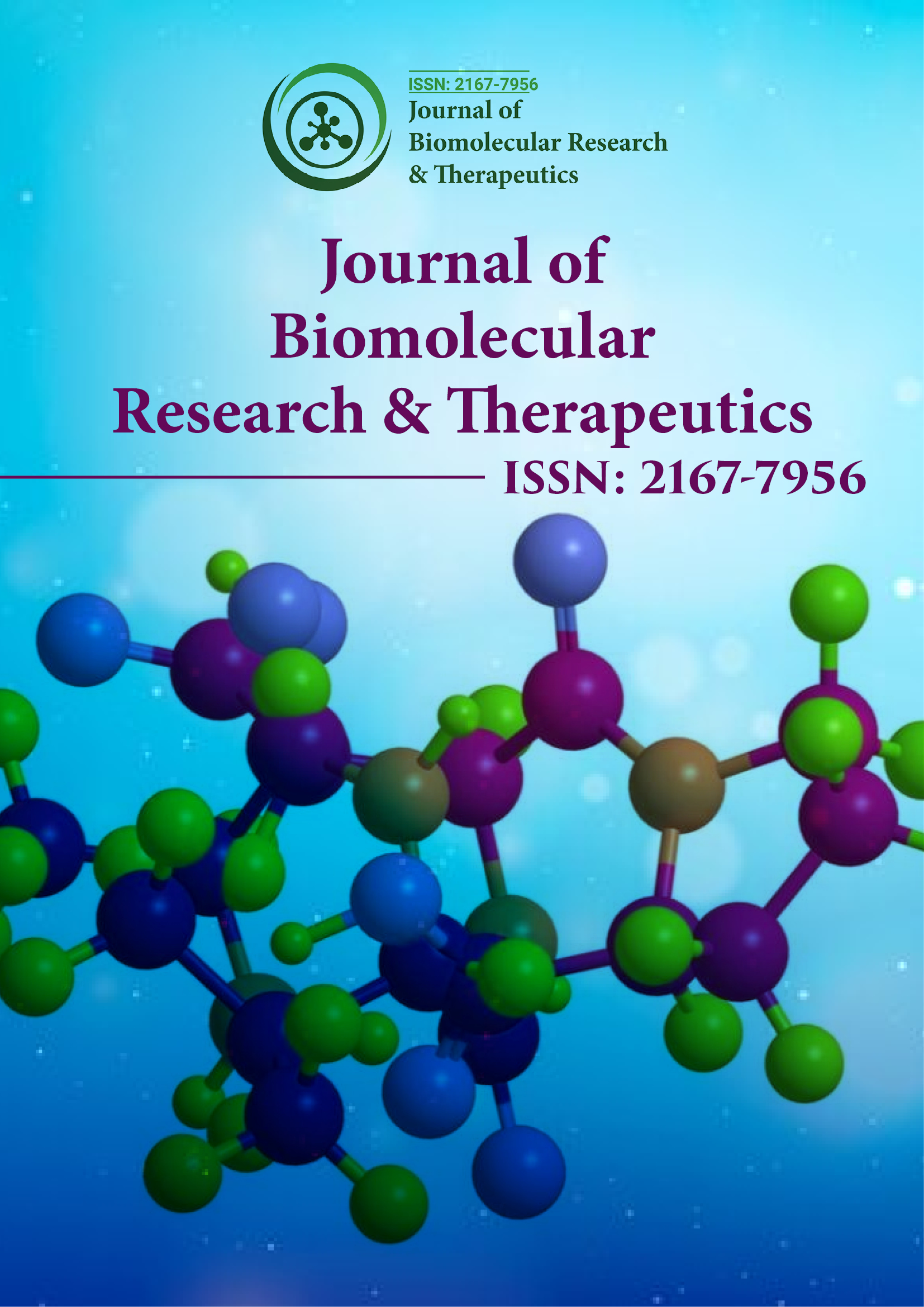ఇండెక్స్ చేయబడింది
- J గేట్ తెరవండి
- జెనామిక్స్ జర్నల్సీక్
- పరిశోధన బైబిల్
- ఎలక్ట్రానిక్ జర్నల్స్ లైబ్రరీ
- RefSeek
- హమ్దార్డ్ విశ్వవిద్యాలయం
- EBSCO AZ
- OCLC- వరల్డ్ క్యాట్
- SWB ఆన్లైన్ కేటలాగ్
- వర్చువల్ లైబ్రరీ ఆఫ్ బయాలజీ (విఫాబియో)
- పబ్లోన్స్
- యూరో పబ్
- గూగుల్ స్కాలర్
ఉపయోగకరమైన లింకులు
ఈ పేజీని భాగస్వామ్యం చేయండి
జర్నల్ ఫ్లైయర్

యాక్సెస్ జర్నల్స్ తెరవండి
- ఆహారం & పోషకాహారం
- ఇంజనీరింగ్
- ఇమ్యునాలజీ & మైక్రోబయాలజీ
- క్లినికల్ సైన్సెస్
- జనరల్ సైన్స్
- జెనెటిక్స్ & మాలిక్యులర్ బయాలజీ
- నర్సింగ్ & హెల్త్ కేర్
- న్యూరోసైన్స్ & సైకాలజీ
- పర్యావరణ శాస్త్రాలు
- ఫార్మాస్యూటికల్ సైన్సెస్
- బయోఇన్ఫర్మేటిక్స్ & సిస్టమ్స్ బయాలజీ
- బయోకెమిస్ట్రీ
- మెటీరియల్స్ సైన్స్
- మెడికల్ సైన్సెస్
- రసాయన శాస్త్రం
- వెటర్నరీ సైన్సెస్
- వ్యవసాయం మరియు ఆక్వాకల్చర్
- వ్యాపార నిర్వహణ
నైరూప్య
డైరెక్ట్ అయాన్ సెలెక్టివ్ ఎలక్ట్రోడ్ మెథడ్ ద్వారా ఎలక్ట్రోలైట్ మెజర్మెంట్పై లిపేమియా ప్రభావంపై ఒక అధ్యయనం
సుశ్రుత సేన్, ప్రమిత్ ఘోష్, ఘోష్ TK, మాండ్రితా దాస్ మరియు శ్రేయోషి దాస్
నేపథ్యం: లిపేమియా పరోక్ష అయాన్ సెలెక్టివ్ ఎలక్ట్రోడ్ (ISE) పద్ధతి ద్వారా పొందిన ఎలక్ట్రోలైట్ సాంద్రతను ప్రభావితం చేస్తుంది, అయితే డైరెక్ట్ అయాన్ సెలెక్టివ్ ఎలక్ట్రోడ్ పద్ధతి ద్వారా కొలతలపై నిర్దిష్ట ప్రభావం ఇంకా స్పష్టంగా అర్థం కాలేదు. ఈ నేపథ్యంలో డైరెక్ట్ ISE ద్వారా ఎలక్ట్రోలైట్ కొలతపై లిప్మియా ఏకాగ్రత పెరగడం వల్ల సాధ్యమయ్యే పాత్రను అంచనా వేయడానికి ఒక అధ్యయనం రూపొందించబడింది.
పద్ధతులు: ఆసుపత్రి నేపధ్యంలో ఎంచుకున్న విషయాల నుండి నమూనాలు సేకరించబడ్డాయి. ప్రతి విషయం నుండి డేటాను రికార్డ్ చేయడానికి ముందుగా రూపొందించిన ముందుగా పరీక్షించబడిన ఫార్మాట్ ఉపయోగించబడింది. సీరం నమూనా 5 ఆల్కాట్లుగా విభజించబడింది. ఒకటి తప్ప, మిగిలిన నాలుగింటిలో, లిప్మియాను ప్రేరేపించడానికి ఏకాగ్రతను పెంచడంలో ఇంట్రాలిపిడ్ జోడించబడింది. VITROS250 & HDC-Lyte అనే రెండు వేర్వేరు డైరెక్ట్ అయాన్-సెలెక్టివ్ ఎలక్ట్రోడ్ పద్ధతుల ద్వారా సమాంతరంగా ఎలక్ట్రోలైట్లు మరియు లిపిడ్ ఏకాగ్రత కోసం 5 ఉప-నమూనాలు పరీక్షించబడ్డాయి. సోడియం & పొటాషియం వంటి ఎలక్ట్రోలైట్లు రెండింటి ద్వారా కొలుస్తారు, మొదటిది ట్రైగ్లిజరైడ్ సాంద్రతను కూడా కొలుస్తుంది.
ఫలితం: రెండు సాధనాల ఫలితాలు పోల్చబడ్డాయి మరియు సోడియం గాఢత కోసం ప్రామాణిక క్లినికల్ వర్గీకరణ యొక్క ఉప సమూహాలలో డేటా కూడా విశ్లేషించబడింది. 0-350 mg% ట్రైగ్లిజరైడ్ను రిఫరెన్స్గా పరిగణనలోకి తీసుకుంటే, ఎలక్ట్రోలైట్స్ ఏకాగ్రత ఎక్కువగా లిపిమియాను పెంచడం కంటే తగ్గింది. 650mg% ట్రైగ్లిజరైడ్ గాఢత దాటి, ఎలక్ట్రోలైట్స్ ఏకాగ్రతలో ఈ క్షీణత అన్ని ఉప సమూహాలలోని నమూనాలకు గణాంకపరంగా గణనీయంగా ఉంది. మెజారిటీ నమూనాలలో, రెండు సాధనాల నుండి పొందిన ఎలక్ట్రోలైట్ విలువలు పోల్చదగినవి. ట్రైగ్లిజరైడ్ సాంద్రత 1550 mg% కంటే, రెండు సాధనాల నుండి పొందిన సోడియం గాఢత గణనీయంగా మారుతూ ఉంటుంది.
తీర్మానం: ప్రధాన ఎలక్ట్రోలైట్స్ అంటే సోడియం మరియు పొటాషియం కోసం లిపెమిక్ సీరం నమూనాల ఈ జోక్య లక్షణాన్ని సవరించడానికి ఒక దిద్దుబాటు కారకాన్ని ఉపయోగించవచ్చు.